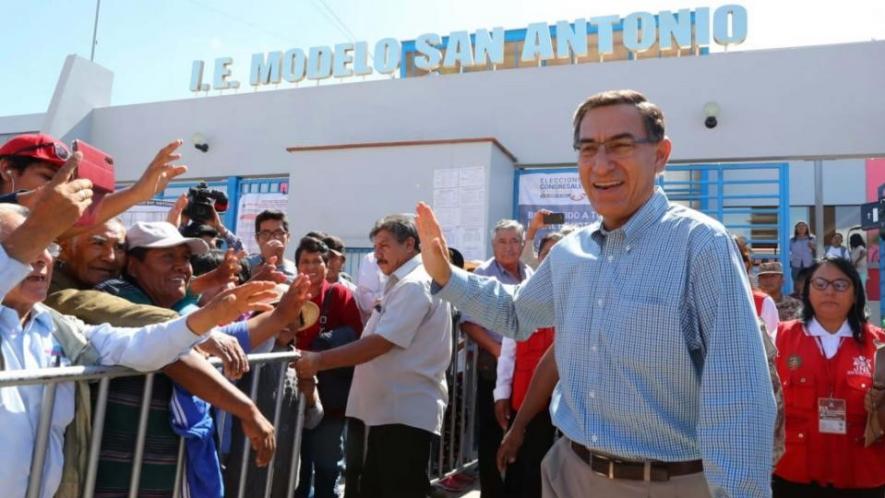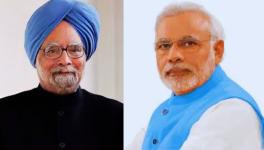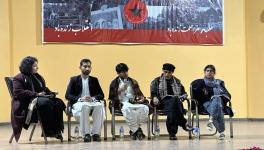Parliamentary Elections in Peru: a Fragmented Congress and a Defeat of Fujimorismo

Peruvian President Martín Vizcarra voted to elect the new members of the Congress on January 26. Photo: Página 12
More than 25 million Peruvians went to polls on January 26 to elect the new members of the Congress. According to the results of an exit poll as well as of the quick-count conducted by a local news network America TV and the pollster Ipsos Peru, the new Congress of the Republic of Peru will be highly fragmented. The exit poll indicated that over 10 parties would have representation in Congress, while no party would have a majority.
The results also confirmed the defeat of the far-right Popular Force (FP) party, led by Keiko Fujimori, the daughter of former Peruvian dictator Alberto Fujimori, which until the dissolution of Congress in September 2019, had an absolute majority. According to the Ipsos’s report, the FP will get 7% of the votes and will have only 20 seats out of the 130 in the congress, in contrast to the 73 it had before.
The quick-count results showed that the center-right party Popular Action (AP) would be the largest block with 10.1% of the votes. Following the AP are the right-wing Agricultural People’s Front of Peru (Frepap) with 8.9% of the votes, the center-right Podemos Peru with 8.2%, the right-wing Alliance for Progress with 8%, the center-right Purple Party with 7.5%, the left-wing Union for Peru with 6.9%, the left-wing Broad Front with 6.1%, the center-right We are Peru Democratic Party with 5.6%, and the people’s party Together for Peru (Juntos por el Perú) with 5.1% of the votes.
More than 2,000 candidates from 21 parties contested in these parliamentary elections. If these results hold, the highlight of the elections would be that under the leadership of progressive Lucía Alvites, Together for Peru surpassed the 5% electoral cut-off and won its representation in Congress.
The National Office of Electoral Processes (ONPE) has counted only 22% of the votes and is expected to announce the results and the final composition of Parliament by the end of this week.
This new Congress will serve for approximately one and a half years until the next presidential election in April 2021 and will then be replaced by a new body for five years.
On September 30, 2019, center-right President Martín Vizcarra exercised his executive powers and constitutionally dissolved the far-right opposition-controlled nation’s legislature after he was denied a second vote of confidence by the legislators on that day.
Vizcarra, whose party Peruvians for Change (PPK) did not contest in these elections, has received the support of the center and left-wing parties for his anti-corruption agenda after the dissolution of Congress. With the formation of this new Congress, Vizcarra has a new opportunity to push his anti-corruption reforms.
The Fujimorismo block and its allies had more than 80 legislators in a unicameral congress. It was due to a system drafted by Alberto Fujimori during his dictatorship, a period marked by corruption, social conservatism, neoliberal economics, human rights violations and prosecution of left-wing leaders.
Get the latest reports & analysis with people's perspective on Protests, movements & deep analytical videos, discussions of the current affairs in your Telegram app. Subscribe to NewsClick's Telegram channel & get Real-Time updates on stories, as they get published on our website.
























